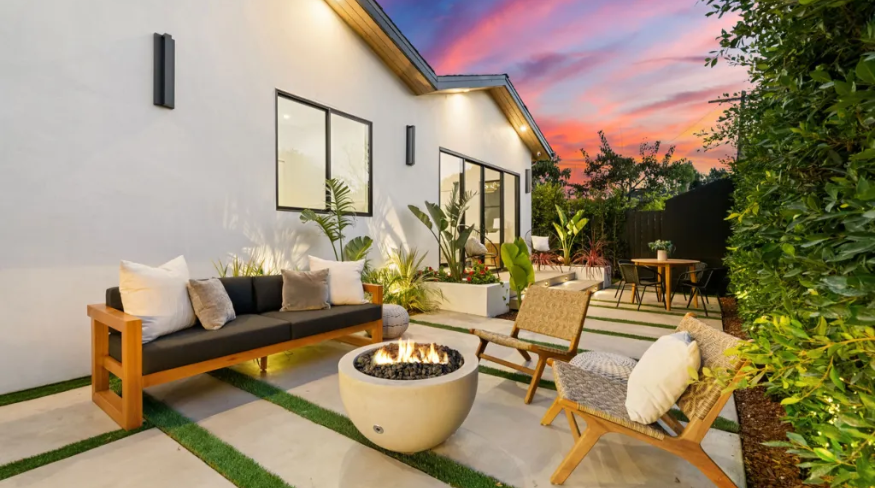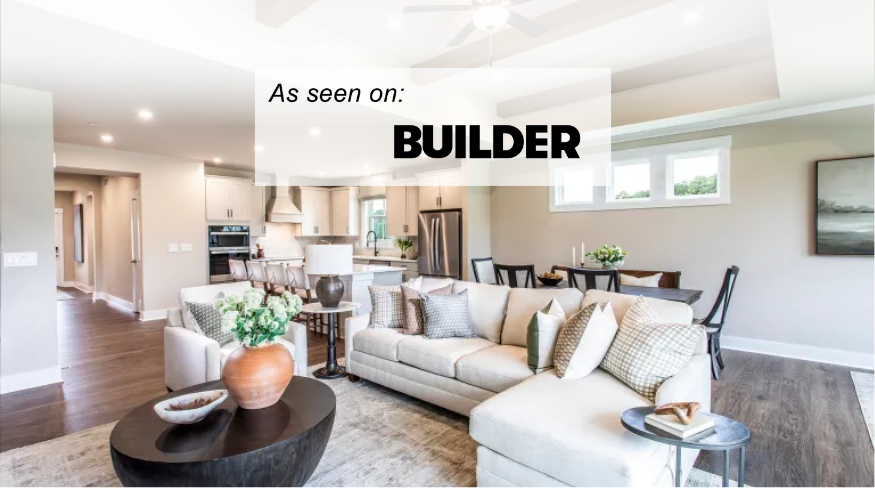Landscaping can offer much more than aesthetics. It’s a proven way to increase your home’s curb appeal and potentially its market value. Well-planned landscaping can raise home value up to 30%, depending on the scope and quality of the work, while offering new ways to enjoy being at home.
Creating a Grand Entrance
Making the front of your home appealing to visitors and potential buyers starts with a healthy, well-maintained lawn. From there, garden beds with a well-thought-out design and a variety of plant types, sizes and colors, along with mulch and a border can enhance attractiveness.
Strategically selected and placed trees not only add a stately look to your yard but may help reduce energy costs by providing shade, which could lower indoor temperatures. Adding a walkway of flagstone or pavers bounded by plants creates an inviting approach to your front door. Finally, landscape lighting can create visual interest at night while improving safety.
Expanding Your Living Space Out Back
Behind your home, it’s all about creating enjoyable spaces for relaxing and entertaining. The possibilities and combinations are only limited by your imagination.
Decks and patios have always been reliable ways to expand your living area outdoors and add potential resale value. Fire features, pergolas, gazebos, and outdoor kitchens and bars have become much more popular for homeowners and buyers in recent years, potentially offering a solid return on investment.
Selecting the Right Plants
There are several considerations to keep in mind when it comes to plant selection. In general, it’s best to incorporate native plants that thrive in your region and are drought-tolerant and easy to maintain.
If you live in an area with wildfire risk, choose fire-resistant plants like lavender, red yucca, and sedum, keeping them at least five feet from the house and removing dead wood and dry mulch, which can ignite quickly.
In suburban and rural areas, landscaping can serve as a buffer for deer, rabbits, and rodents. Choose deer-resistant and unpalatable plants, such as boxwood, ornamental grasses, or daffodils. Avoid fruit-bearing trees close to the house, which can attract unwanted wildlife.
Plant selection and location can even help deter intruders. Avoid dense shrubs in front of windows or near doors where someone could hide. Choose low-growing, thorny plants like barberry or holly in these areas, and keep entry points well-lit and visible by trimming overgrown hedges.
If you make major landscaping improvements, your homeowners insurance should reflect the updated coverage value and any potential new risks. Contact a Westwood agent to make sure you have the protection you need.
Please Note: This article is for general informational and educational purposes only. It does not represent any specific insurance policy and does not modify any provisions, limitations, or exclusions of any current policy.





